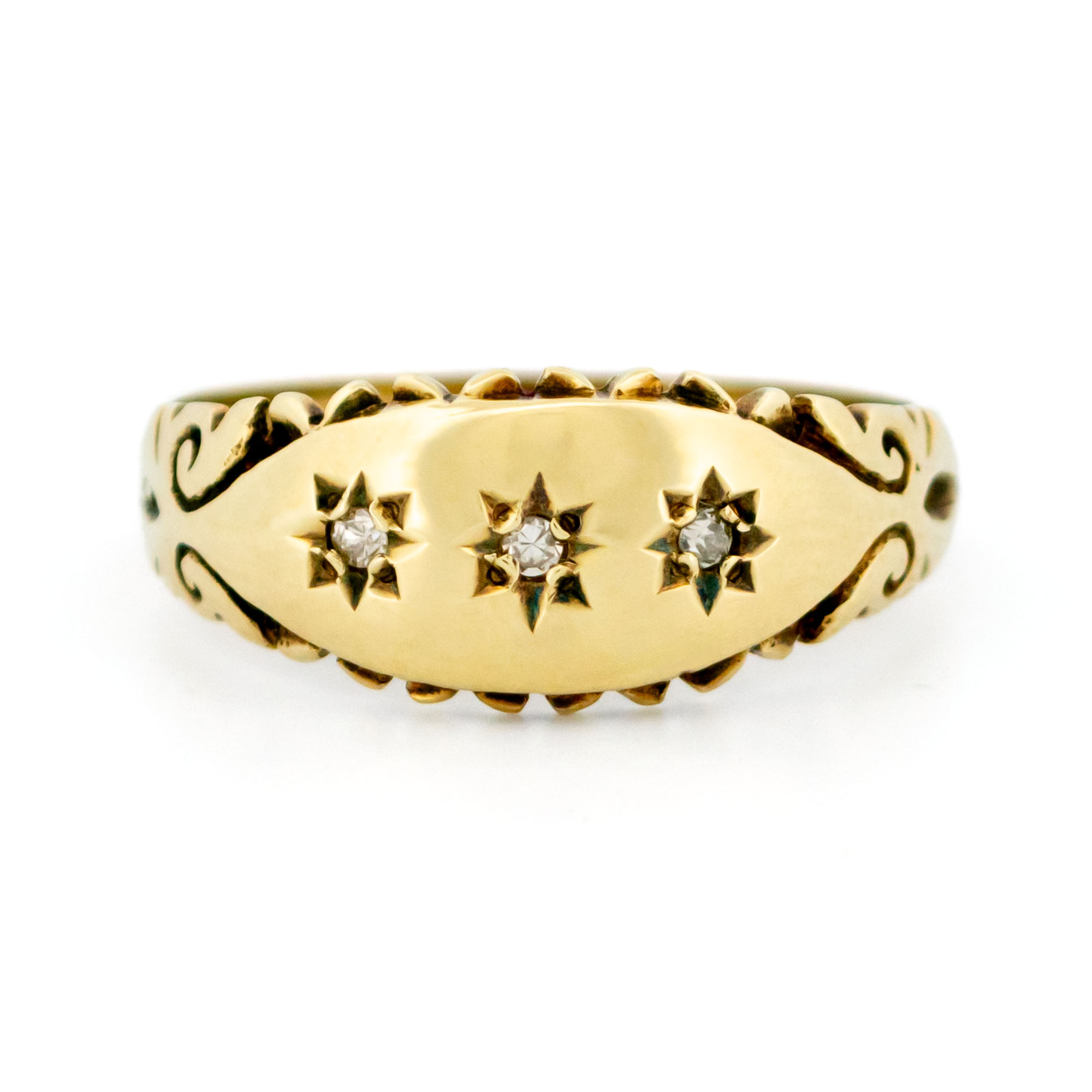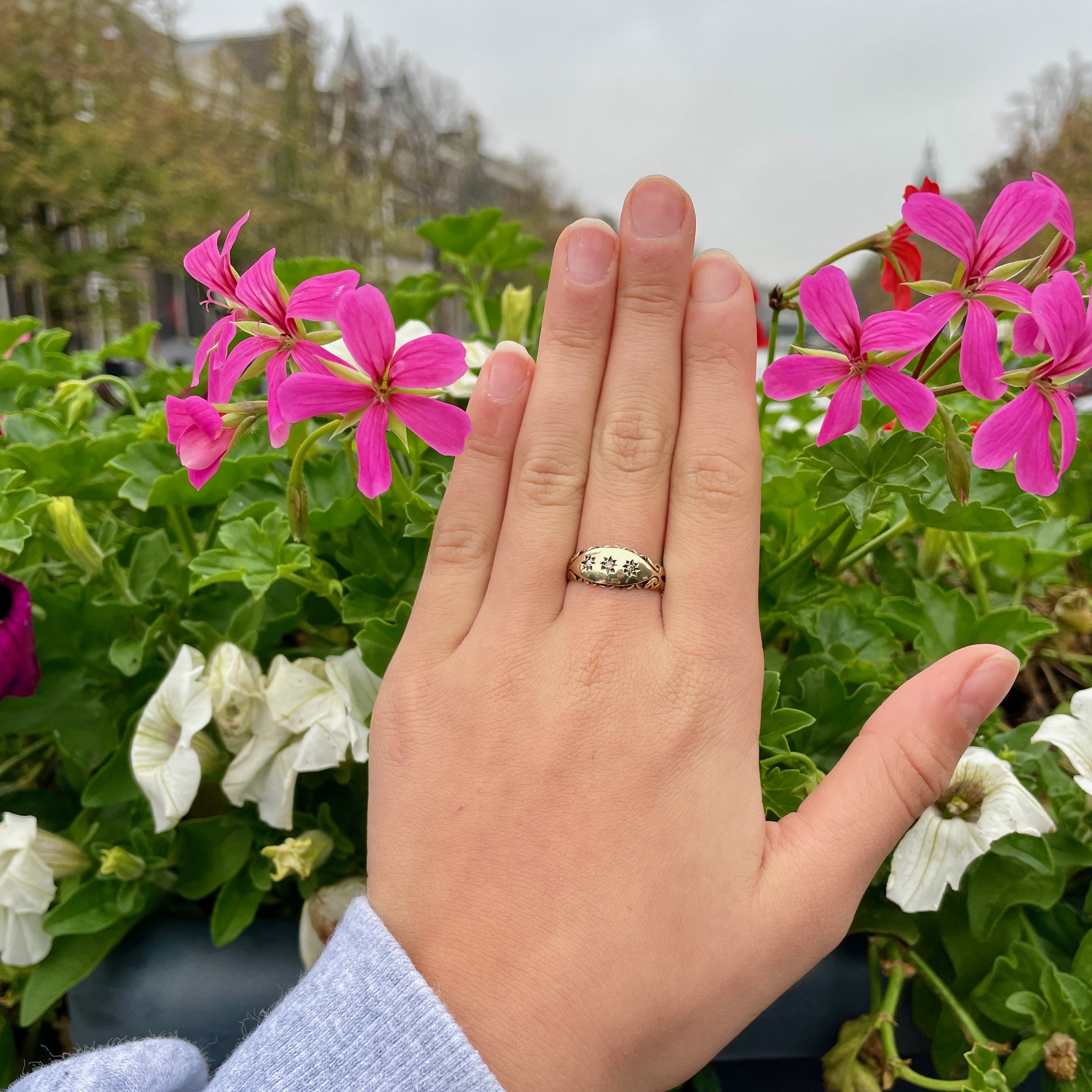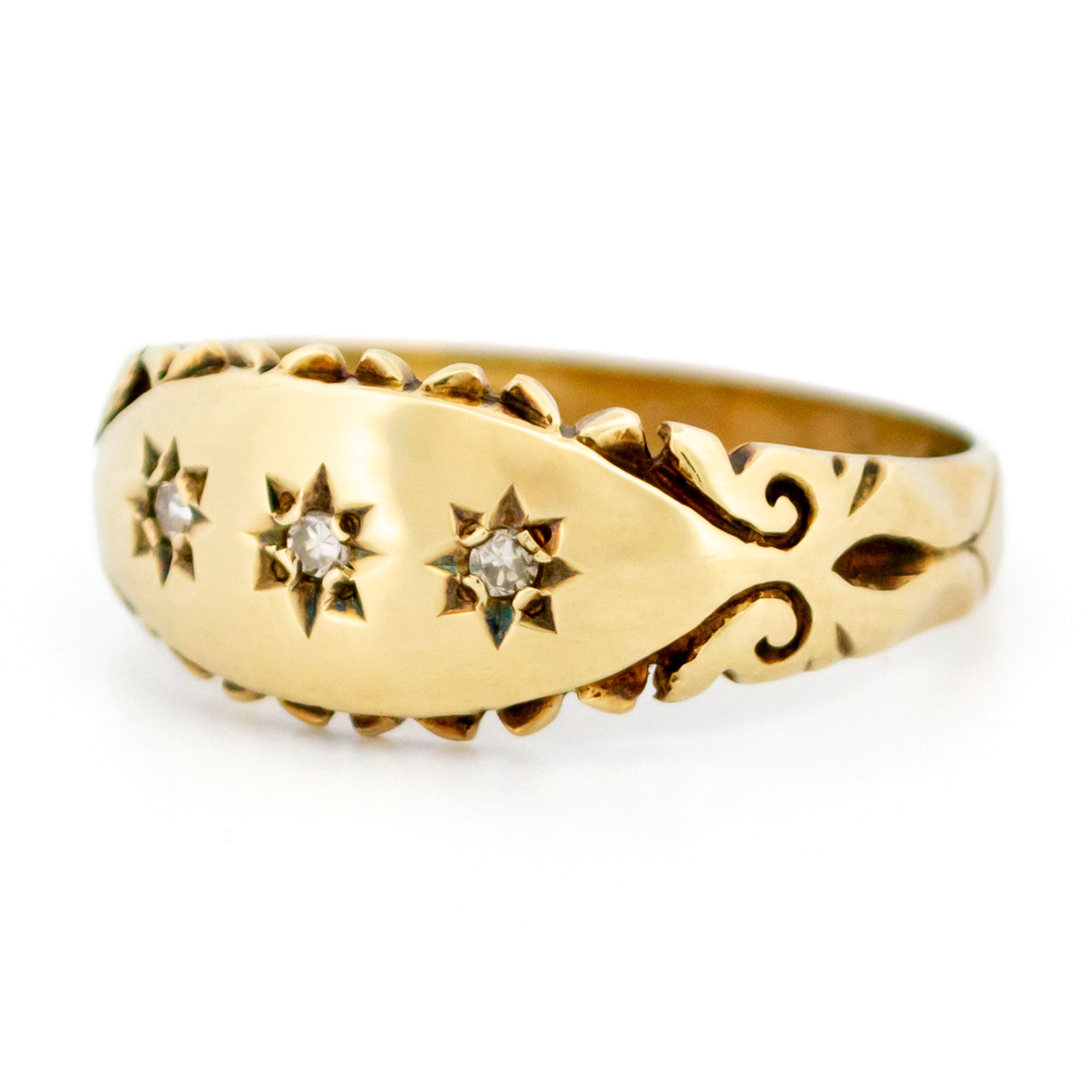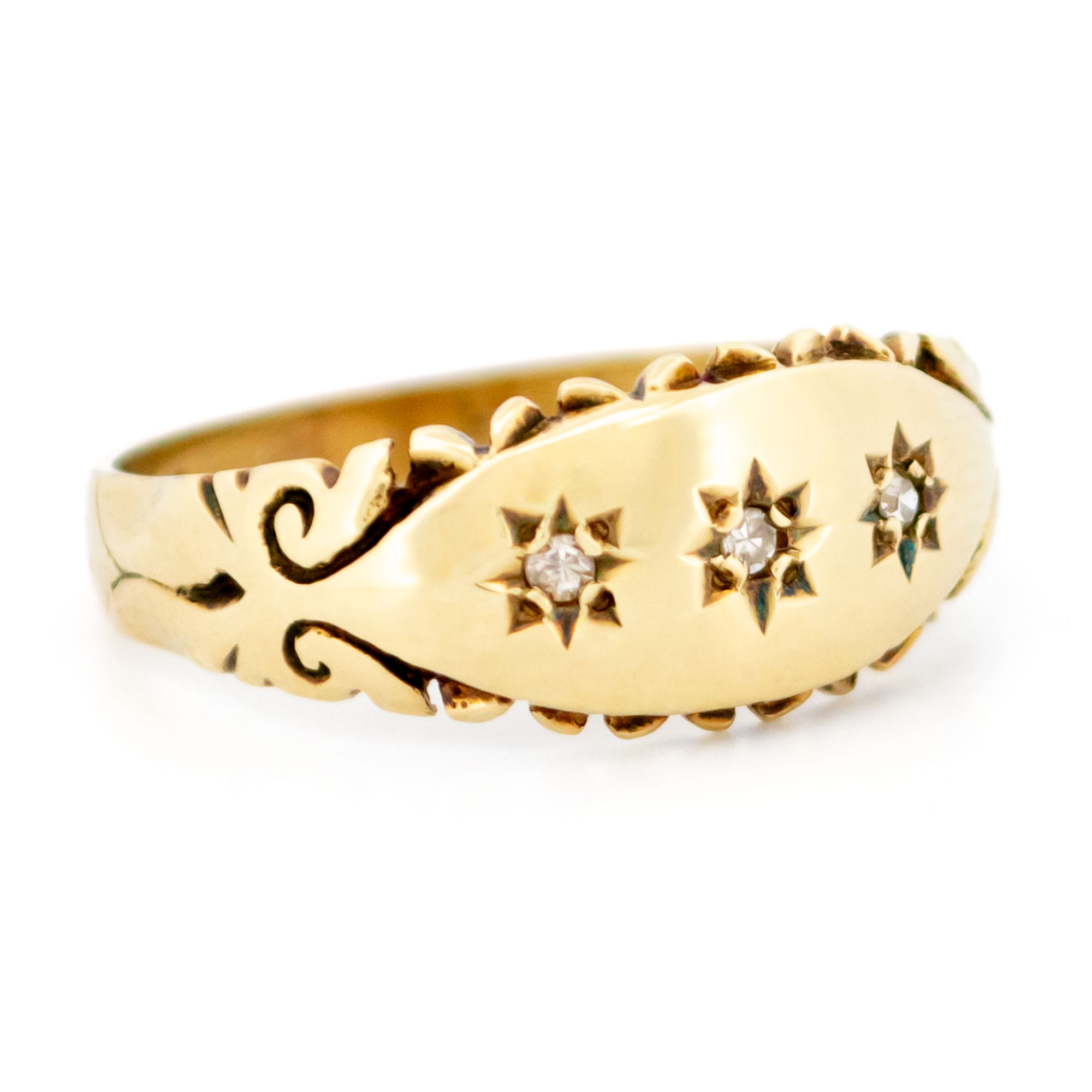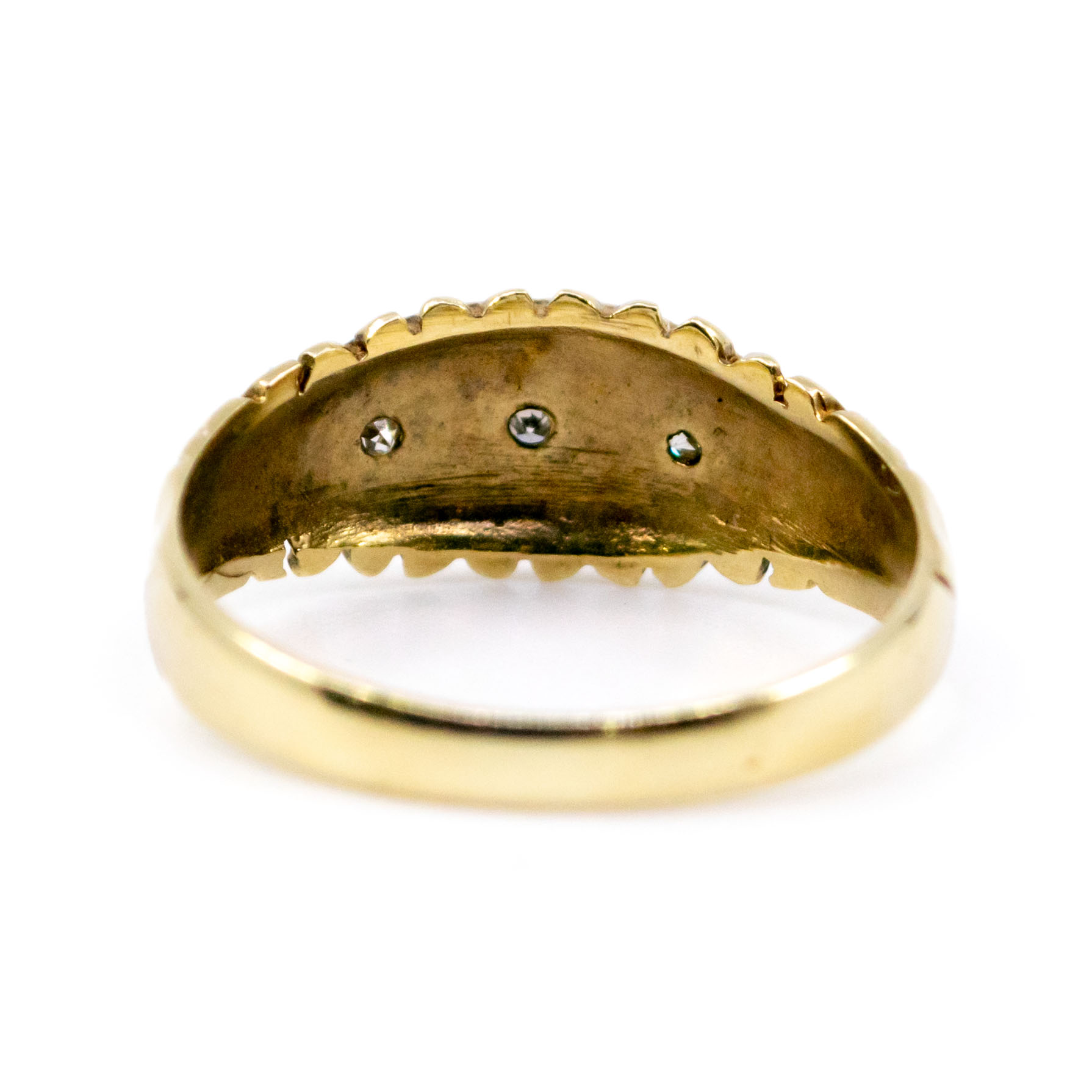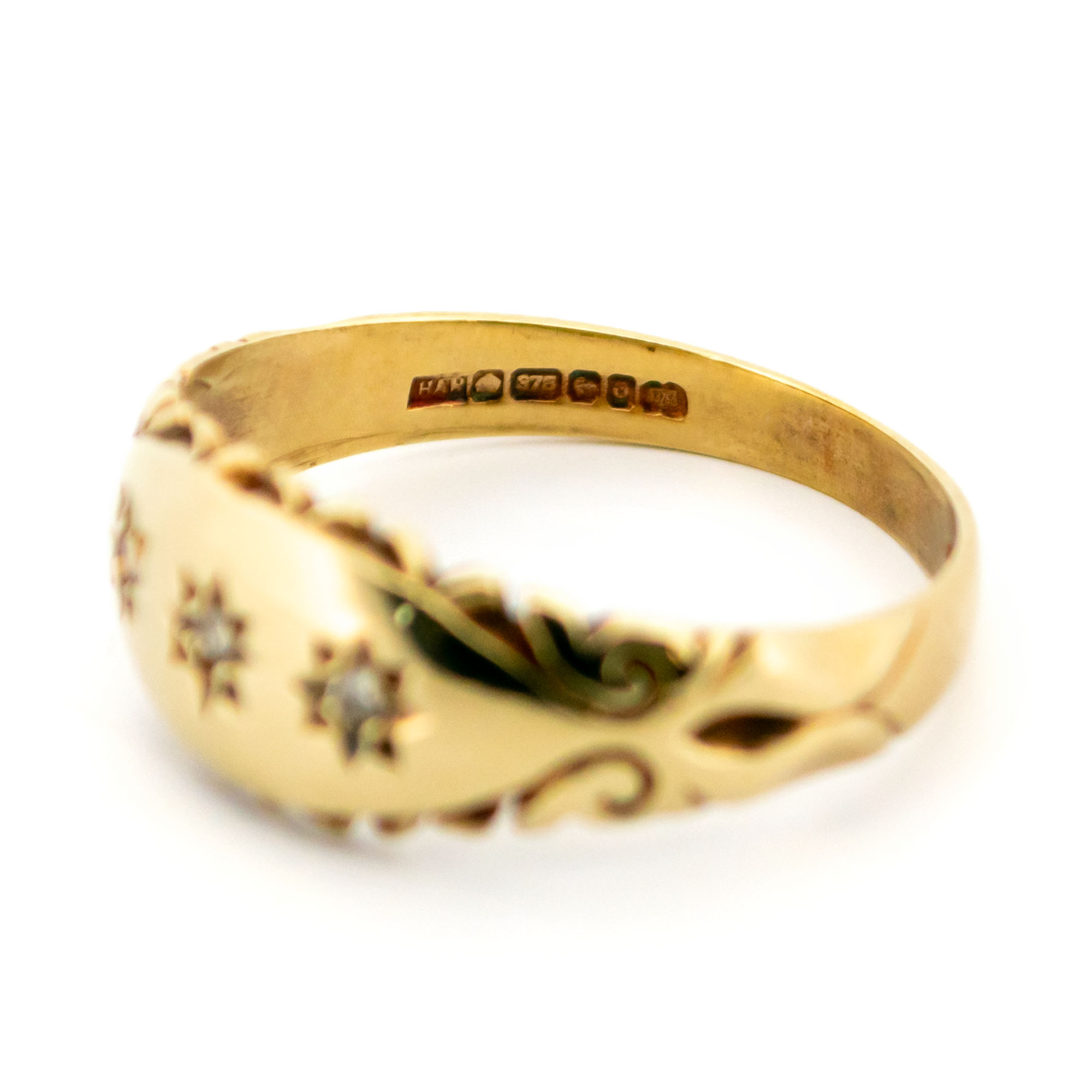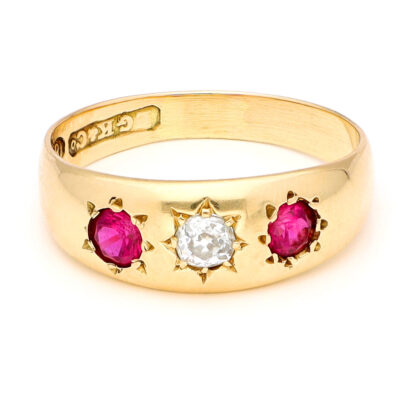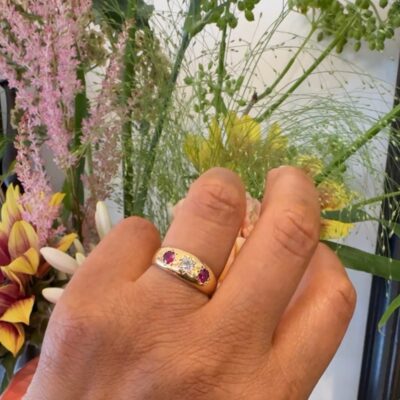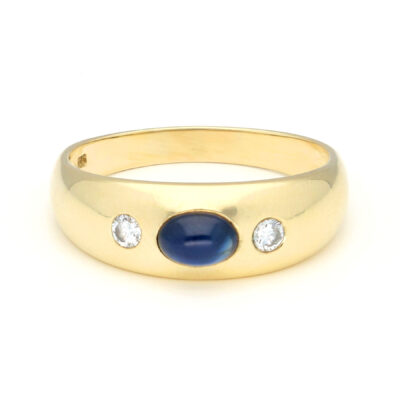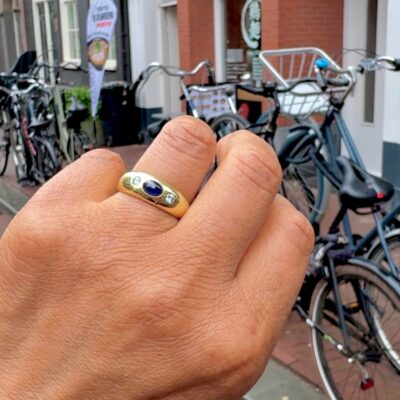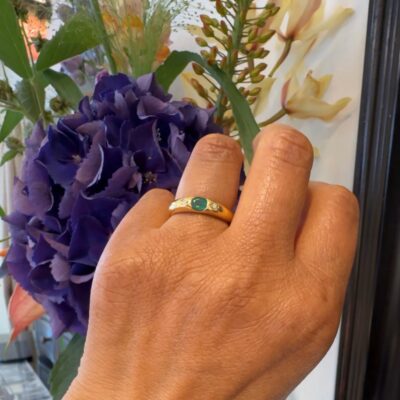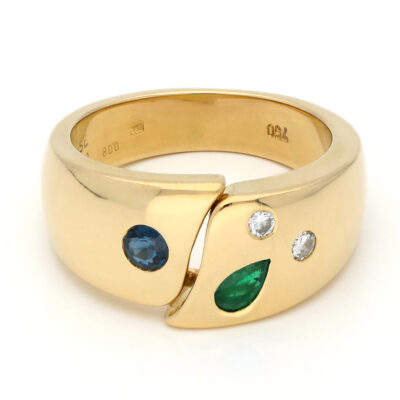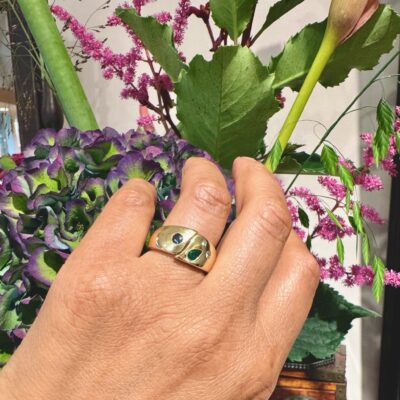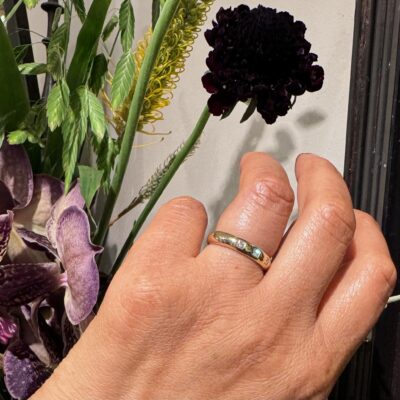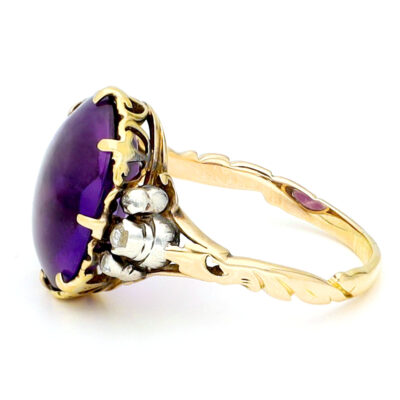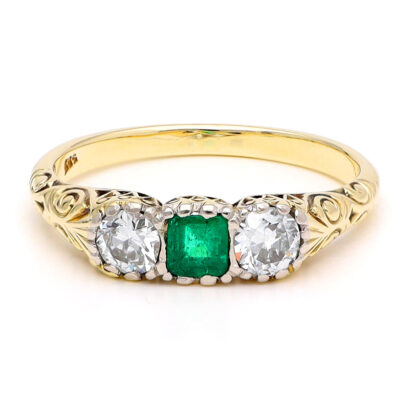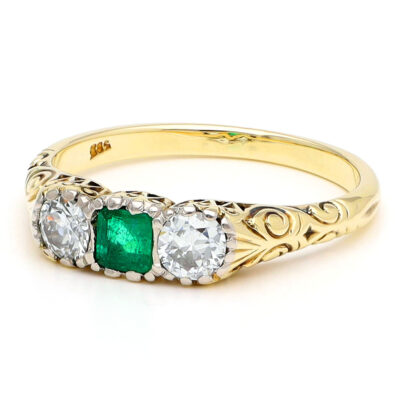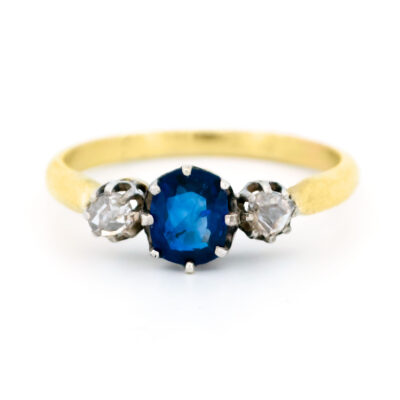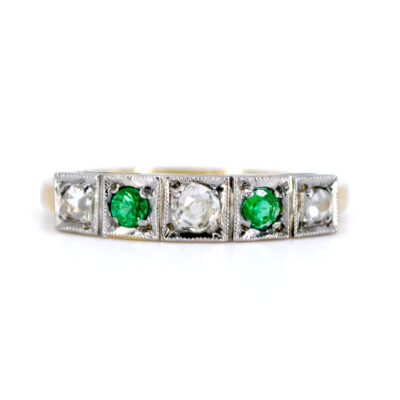An elegant piece of 1938 Birmingham craftsmanship, this 9k yellow gold gypsy ring features three single-cut diamonds set in charming star-shaped engravings. This early 20th-century treasure brings a touch of vintage refinement to any jewelry collection.
Videos
Details: Star Set 3 Single-cut diamonds, 9k Ring.
Design Era: Early 20th Century (1910-1940).
Size: 16.71 NL / 52.5 FR / 6¼ US / M UK, sizeable (Within reason. Contact seller for information).
Dimensions: H 0.2 x W 0.8 cm.
Weight in grams: 2.
Condition: Very good condition – slightly used with small signs of wear.
Shipping and Pickup: This elegant piece ships from our store located in the center of Amsterdam, The Netherlands. We offer both registered shipping and local pickup at our store. In the case of local pickup, any applicable shipping costs will be refunded.
About Us: Add some sparkle to your style with Binenbaum.com. We offer a stunning selection of antique and vintage jewelry that you won’t find anywhere else. From timeless rings and dazzling necklaces to unique brooches, we have something for every taste and occasion. Visit our website today and treat yourself to a piece of history.
| Design Era | |
|---|---|
| Design & Historical Context | During the 1910s to 1950s, the design of jewelry remained creative and stylish despite being impacted by economic and military events. Jewelry fashions during this time were influenced by various parts of the world, including the Near and Far East, and featured both exotic and geometric patterns that reflected the emergence of the machine age. New York became an important center for fashion along with Paris, and European jewelry companies had the opportunity to sell to and purchase from the Indian subcontinent. Art Deco jewelry, characterized by the use of numerous gemstones, was popular during this time, and the use of gold in jewelry increased in popularity due to its lower cost compared to platinum. Jewelry design also attracted artists and designers from various fields, giving hints about the direction that the industry would take in the future. |
| Key Materials | |
| Materials & Craftsmanship | Single-cut diamond: The Classic Sparkle of Timeless Elegance Single-cut diamonds are a classic and elegant choice in the world of fine jewelry, known for their understated yet captivating sparkle. Unlike modern brilliant-cut diamonds, which typically have 58 facets, single-cut diamonds have fewer facets—usually 17 or 18—resulting in a simpler, more traditional appearance. Historically, single-cut diamonds were among the earliest diamond cuts used in jewelry, dating back to the 14th century. This cut was popular in vintage and antique jewelry, especially during the Victorian and Edwardian eras. The fewer facets of a single-cut diamond create a subtle, soft brilliance, which adds a touch of old-world charm and sophistication to any piece. In modern jewelry, single-cut diamonds are often used as accent stones in pavé settings, vintage-inspired designs, and delicate pieces where a more refined sparkle is desired. Their simplicity makes them an excellent choice for adding a touch of elegance without overwhelming the overall design. Single-cut diamonds are more than just a gemstone choice; they are a nod to timeless beauty and classic craftsmanship. Their subtle sparkle and historical significance make them a perfect option for those who appreciate the charm of vintage and antique-inspired jewelry. 9k: The Affordable and Durable Choice with a Subtle Golden Hue 9k gold is a cost-effective and sturdy option in the world of fine jewelry, particularly popular for those seeking the look of gold at a more accessible price point. The 9k indicates that the gold is composed of 37.5% pure gold, with the remaining 62.5% made up of alloyed metals such as copper, silver, nickel, or zinc. This higher proportion of alloyed metals results in a more durable and harder material, making 9k gold an excellent choice for everyday wear. Historically, 9k gold has been favored in regions like the United Kingdom and Australia, where it is legally recognized as gold. It offers a balance between the luxury of gold and the practicality of more affordable metals, making it accessible to a wider range of people. In modern jewelry, 9k gold is appreciated for its durability and subtle color. While its gold content is lower than that of 14k or 18k gold, it still retains a warm, golden hue, though it is slightly paler. The color of 9k gold can vary depending on the metals used in the alloy: Yellow Gold: 9k yellow gold has a softer, more subdued golden color compared to higher karat golds, but it still carries the classic warmth and appeal of gold. White Gold: 9k white gold has a faint golden tint beneath its white finish, which is often enhanced with a rhodium plating to give it a brighter, more silvery appearance. Rose Gold: 9k rose gold, made by adding more copper to the alloy, has a delicate pinkish hue that is slightly more muted than higher karat rose golds but still carries a romantic charm. 9k gold is commonly used in rings, earrings, bracelets, pendants, and other jewelry that is designed for daily wear. Its increased durability means it is less prone to scratching and bending, making it a practical choice for pieces that are worn regularly. 9k gold is more than just an affordable alternative; it is a symbol of practical luxury and everyday elegance. Its durability, combined with its subtle and warm color, makes 9k gold a popular choice for those who want the beauty of gold with the added benefit of strength and affordability. Whether in a simple design or an intricate piece, 9k gold offers a lasting and attractive option for jewelry that can be cherished daily. |
| Size | |
| Dimensions | H 0.2 x W 0.8 cm |
| Gender | |
| Weight (in grams) | 2 |
| Condition | Very good condition – slightly used with small signs of wear |
By following these tips, you can enjoy your precious jewelry for many years to come.
Related Products
-
Diamond Ruby 14k Gypsy Ring 17539-9232
€ 1.695,00 VAT incl. (where applicable) -
Diamond Sapphire 14k Gypsy Ring 17681-9252
€ 1.695,00 VAT incl. (where applicable) -
Diamond Emerald 18k Gypsy Ring 13865-8248
€ 1.695,00 VAT incl. (where applicable) -
Diamond Emerald Sapphire 18k Gypsy Ring 16771-9001
€ 3.695,00 VAT incl. (where applicable) -
Diamond 18k Row Ring 16733-8967
€ 5.895,00 VAT incl. (where applicable) -
Diamond 9k Gypsy Ring 16349-8810
€ 1.295,00 VAT incl. (where applicable) -
Amethyst Diamond 14k Solitaire Ring 17983-9374
€ 1.895,00 VAT incl. (where applicable) -
Diamond Emerald 14k Row Ring 17887-9322
€ 2.495,00 VAT incl. (where applicable)
- Home
- Collection
- Fine Jewelry
- Silver Jewelry
- Silverware
- Boxes
- Candlesticks
- Salt and pepper shakers
- Miniatures
- Salt cellars
- Spoon Set
- Condiments
- Frames
- Napkin Ring
- Spoon
- Oddities
- Cups
- Vases
- Cutlery
- Serving Spoon And Cake Server
- Candlesticks
- Baskets
- Hanukkiah
- Spice Tower
- Yad
- Tea Set
- Sugar Castor
- Napkin Rings
- Wine Bottle Coaster
- Wine Stopper
- Tea Pot
- Jugs
- Rattles
- Hip Flask
- Miscellaneous
- Rings 💍
- About
- Contact
- No products in the cart.
